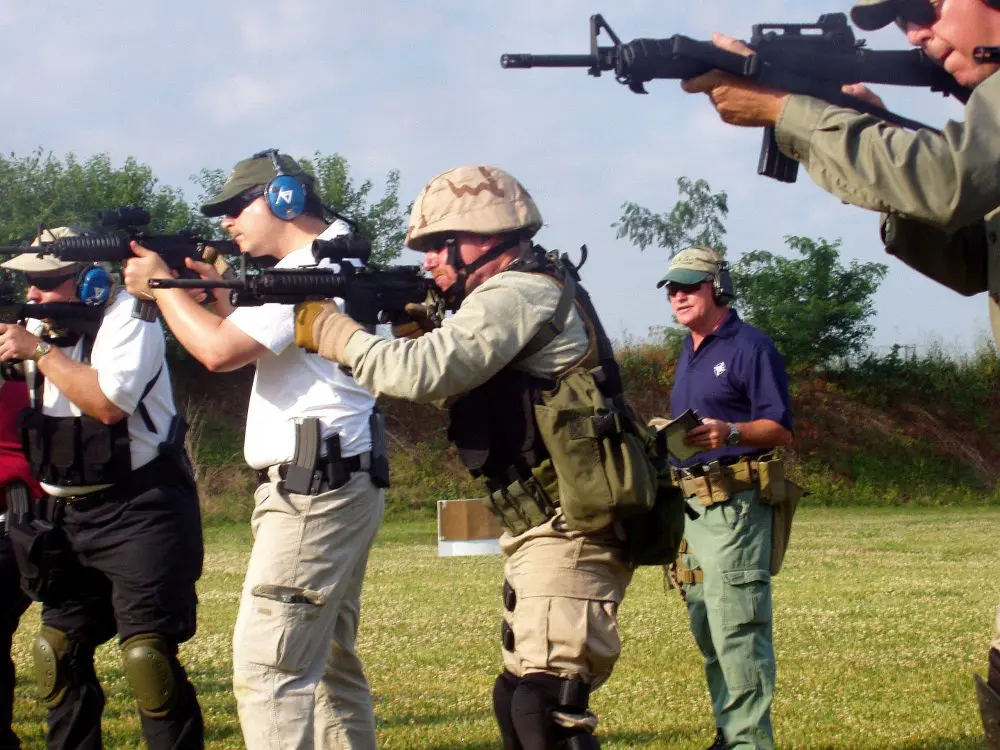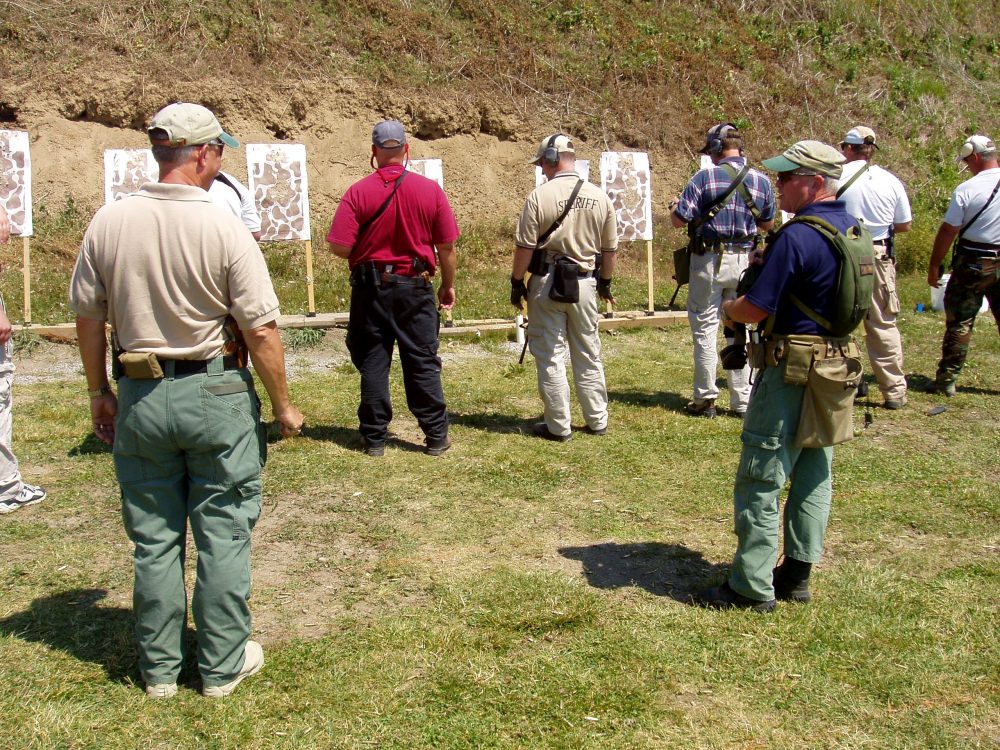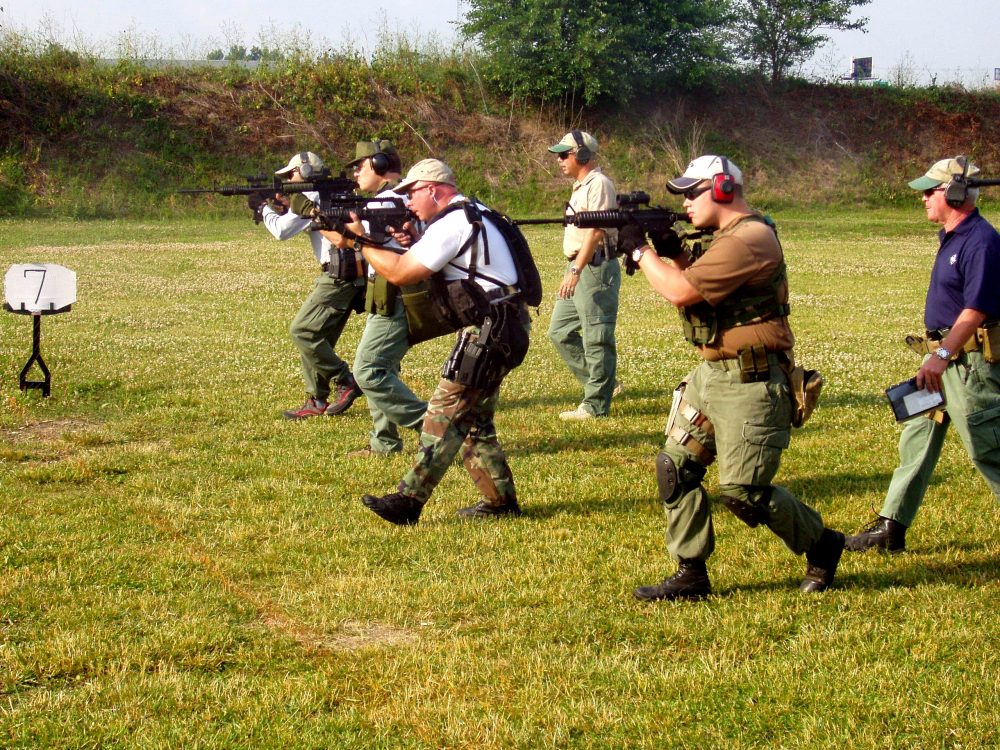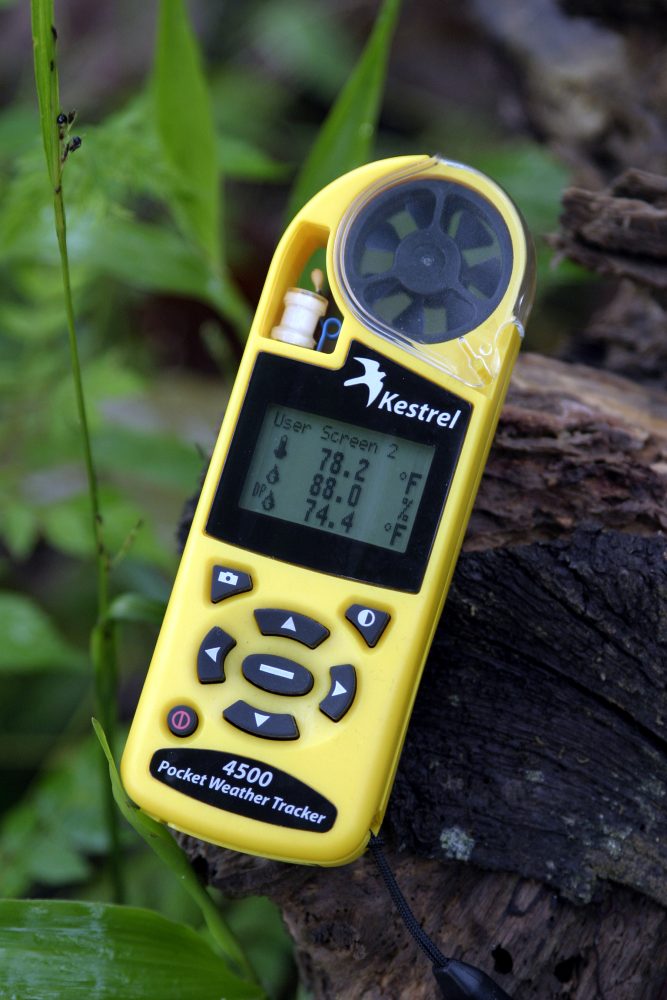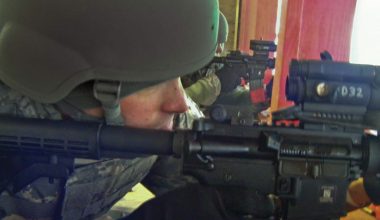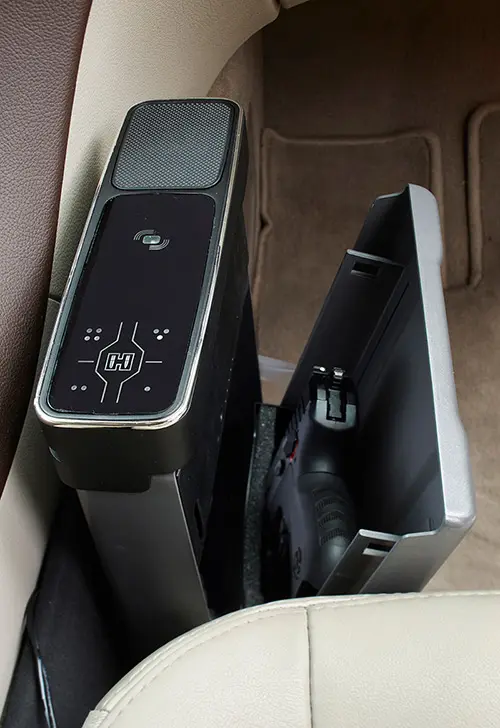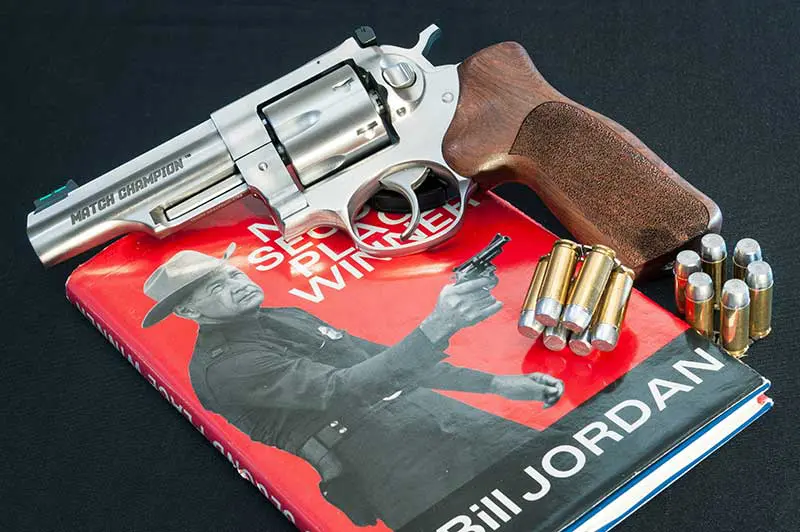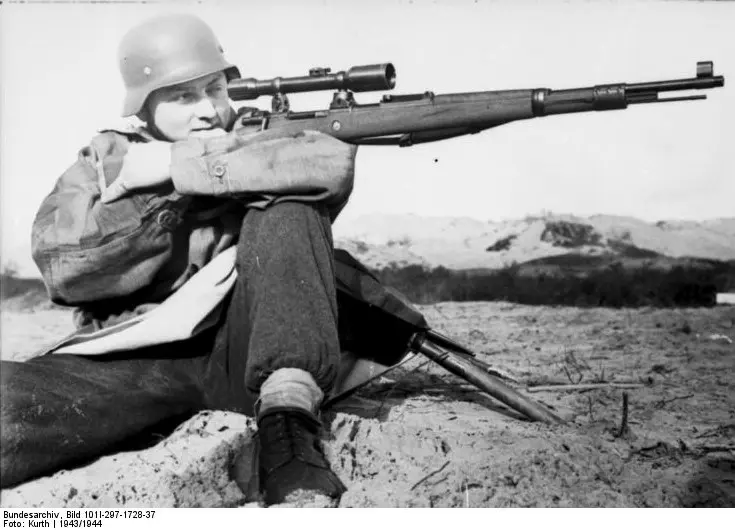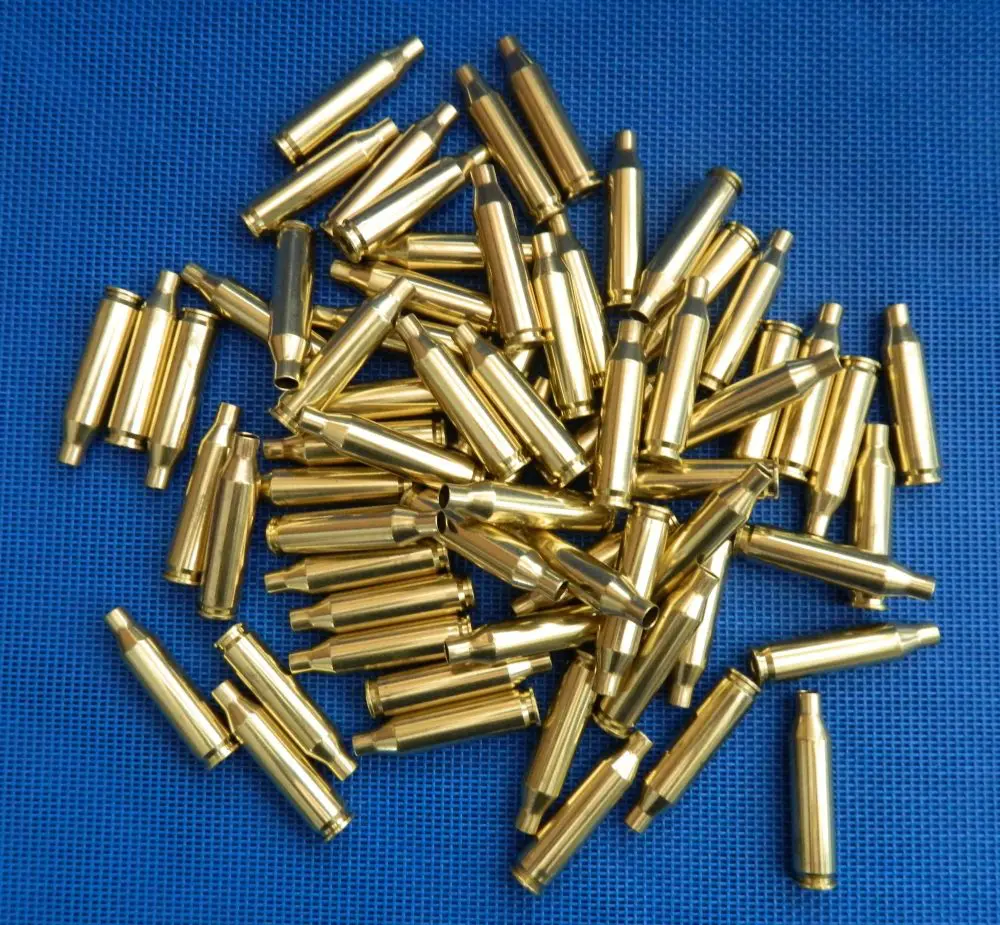Pat Rogers coaches the line through a course of fire.
Most readers of S.W.A.T. are familiar with Patrick A. Rogers through his outstanding articles that have been printed here. Many have wondered what it is like to train under Pat’s watchful eye. Here is a firsthand account of the E.A.G.’s three-day tactical carbine course.
The Boone County, Indiana Sheriff’s Department (BCSD), with Captain Ken Campbell as the coordinator, hosted the course. For those readers who are in the Midwest, get on Ken Campbell’s mailing list for courses. Ken brings in some of the top instructors in the training world and almost all the courses are open to both private citizens and law enforcement. Ken also is an outstanding instructor who teaches courses for law enforcement, private citizens and for a few private training companies. Ken assisted Pat during the three-day course as a coach, as well as performing all the hosting duties. The range is a simple square range with portable target stands. The focus of the course was manipulating the carbine and getting good hits—this was all that was needed.
Pat Rogers and Ken Campbell prepare the line for the next course of fire.
Little needs to be said about Pat Roger’s resume as an instructor, fighter, and general all-around good guy. Pat is retired from both the United States Marine Corps and NYPD. Pat has worked for other government agencies in both an operational and training capacity. Pat now focuses on training for DOD and other government agencies, but a few times each year Pat will come to a facility such a BCSD to teach open classes.
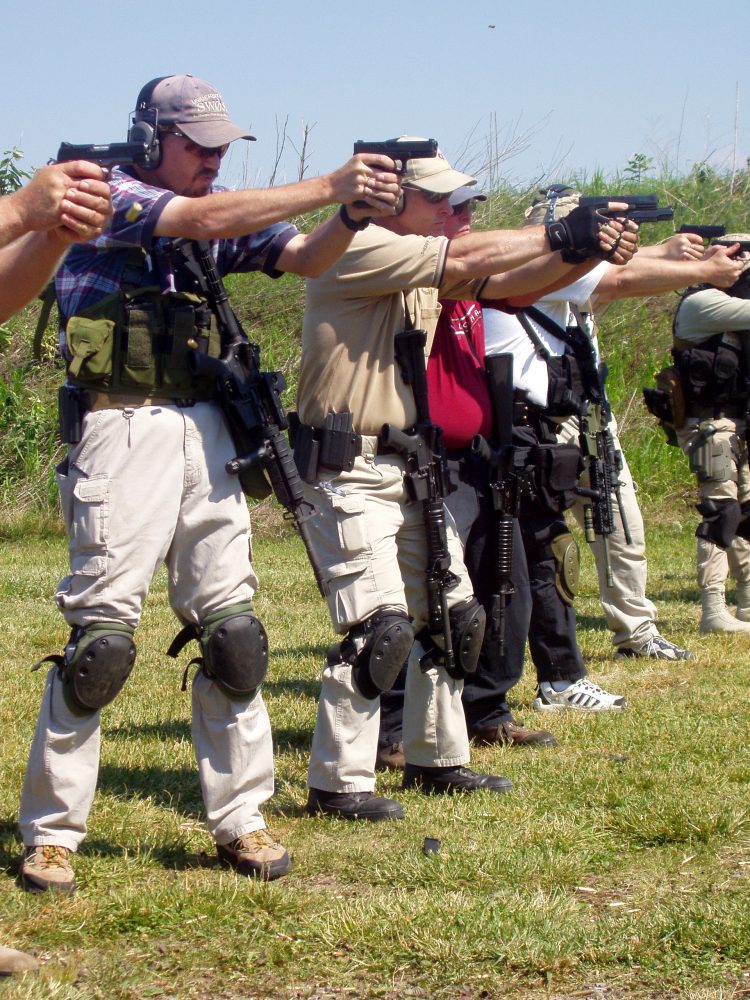
One unique aspect to training with Pat is the constant adjustment he makes to his curriculum. Adding to his extensive real-world experience, he reads many after action reports (AARs) from various law enforcement and military organizations he has trained. This constant feedback gives Pat insight into what works, what doesn’t work, and what threats are emerging. He then makes subtle adjustments to improve already proven tactics and techniques and to meet new emerging threats.
There was a variety of equipment in the course. I used my issued Colt carbine with an LMT 10.5-inch barrel, Samco forend, Surefire M900, and Tasco Propoint for an optic. My load bearing vest was the outstanding Eagle Industries Rhodesian Rig chest unit with SDS pouches and a K47 rifle plate. The Rhodesian Rig has been my standard plate carrier for callouts for two years and it has held up well and is comfortable. I used a Glock 17 with an X200 in a Safariland 6004 holster on Safariland nylon gear. The rest of the class had a variety of gear. All of the major AR platform manufacturers were represented—Colt, Bushmaster, Rock River Arms, LMT, etc. For secondary weapons there were Glocks in various calibers, 1911s by various makers, Sigs, Berettas, and H&K. Load bearing gear was Eagle, Spec-Ops Brand, SDS, The Wilderness, and Paraclete with everything from full vest, to chest rigs, to belt pouches. This underscores something Pat stresses to students from day one—identify your mission, get the gear that fits it, then train with the gear you have selected.
Pat and Ken coach a group of students through a shoot-on-the-move course of fire.
Pat starts the class with the mandatory safety lecture and rules for the class. This is important to get twenty-some shooters who have not shot together before on the same page. Pat will push shooters as far as he can, and everyone needs to understand what constitutes safe and not safe. Pat points out that the best safety feature ever brought to the range is the brain and made it clear all shooters need to keep it engaged.
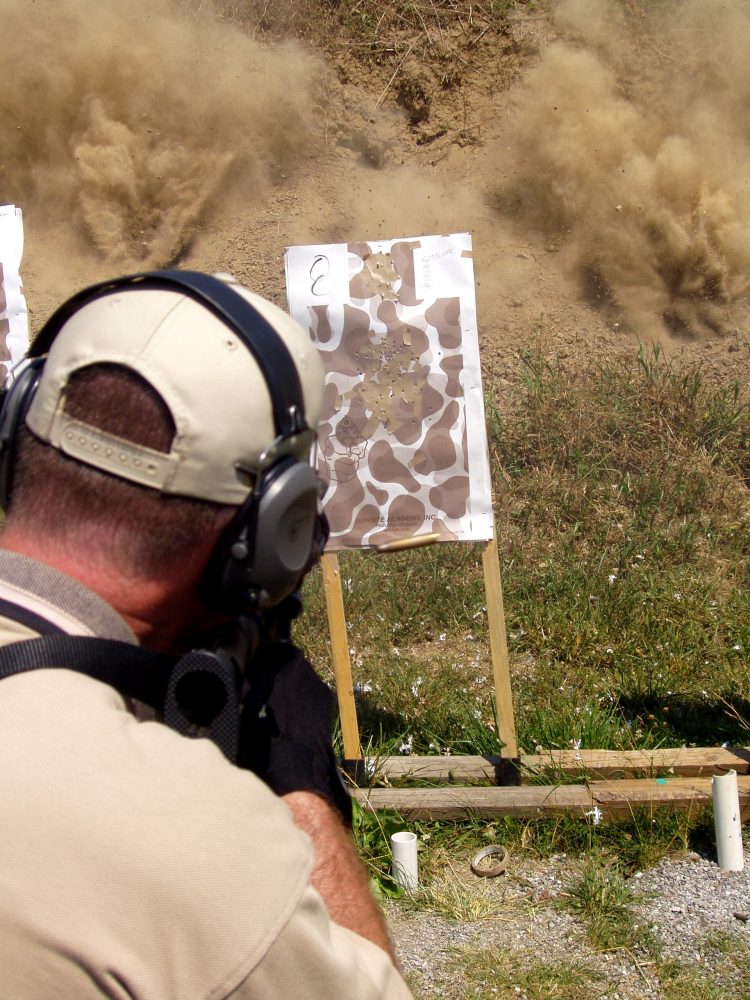
Pat then talks about what gear he believes in and does not believe in, and makes recommendations based on his experience, what he sees in classes, and what is coming through AARs. It isn’t necessary to go over what is the best fighting gear according to Pat (that would be a separate multi-volume piece and Pat would do it better), except to say that all of the recommendations are based on one objective—fighting. Pat is all about making gunfighters and the mission presented to a particular gunfighter drives all of the gear recommendations. The needs of a doctor using the carbine for home defense are different from SOF personnel engaging in a direct-action mission in Baghdad. One thing professional users will get from Pat’s class is the chance to wring out their gear over three days, learning if their gear actually works in repeated uses. The morning lecture was rounded out with Pat discussing the shooting platform—the how and why of the fighting stance. Pat emphasizes squaring to the threat for mobility, strength for controlling the carbine, and maximizing armor protection.
In the afternoon, everyone zeroed their weapons. For this course, and for most CQB range work, a fifty-yard battle zero is used. The fifty-yard zero is quick and efficient to obtain and gives the user a usable zero at most CQB distances. Most of the shooters in the class used some type of optic, with Aimpoint and EOTech being the most common. However, a U.S. Optics variable power scope, a C-More (that actually ran for three days), and Tasco Propoints were present in the class. After the zeroing was completed, the class fine-tuned their accuracy at ranges from ten to fifty yards. The focus of the accuracy training was to ensure shooters develop proper trigger control, stance, and control of the gun. The students were also schooled on boreline/sightline at closer ranges and what is required to put the shots where desired. This finished out the first day.
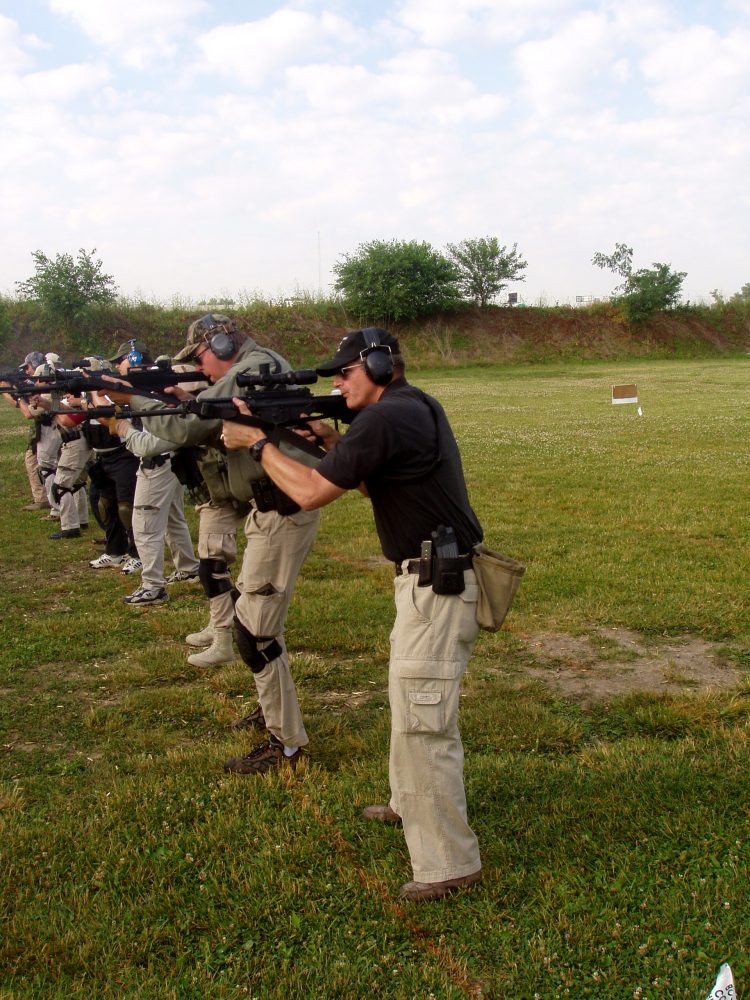
Starting early enough the second day to minimize time in the July sun, the class began incorporating more skills. The morning session started with kneeling and more shooting on the move. Also the second day was spent on manipulating the gun to include tactical reloads, speed reloads, malfunction clearance and transition to the secondary weapon. The class also worked the engagement sequence, doing far more than the controlled pair and the hammer. Students worked hammers to the head, hammers to the body, failure to stop drills, controlled pairs, singles to head, and NSRs (non-standard response) at a variety of ranges. Pat works students so a routine is not developed—only skills and responses. The variety of engagement sequences keeps students thinking and focused on the task.
In an E.A.G. course expect to move—a lot. Shooting on the move in all directions, to kneeling, to a variety of prone positions will keep students sucking on their Camelbaks. While Pat runs a very safe range, don’t expect ramrod straight shooting lines or starting prone perfectly lined up on the rifle waiting for the fire command. Shooters will learn that a variety of postures and principles of movement are what gunfighters need in real gunfights.
The second and third days focused on using the carbine and fighting gear. Pat worked students through the types of malfunctions commonly encountered with the AR-15/M16 system. The malfunctions clearance drills were clearly explained as to why we were doing specific things in a specific order. More importantly, students were admonished on when not to do malfunction clearance on the carbine, but transition immediately to the pistol. On the first day, the class had been instructed on speed and tactical reloads and now were expected to keep the guns running or, if necessary, transition to the pistol during the drills.
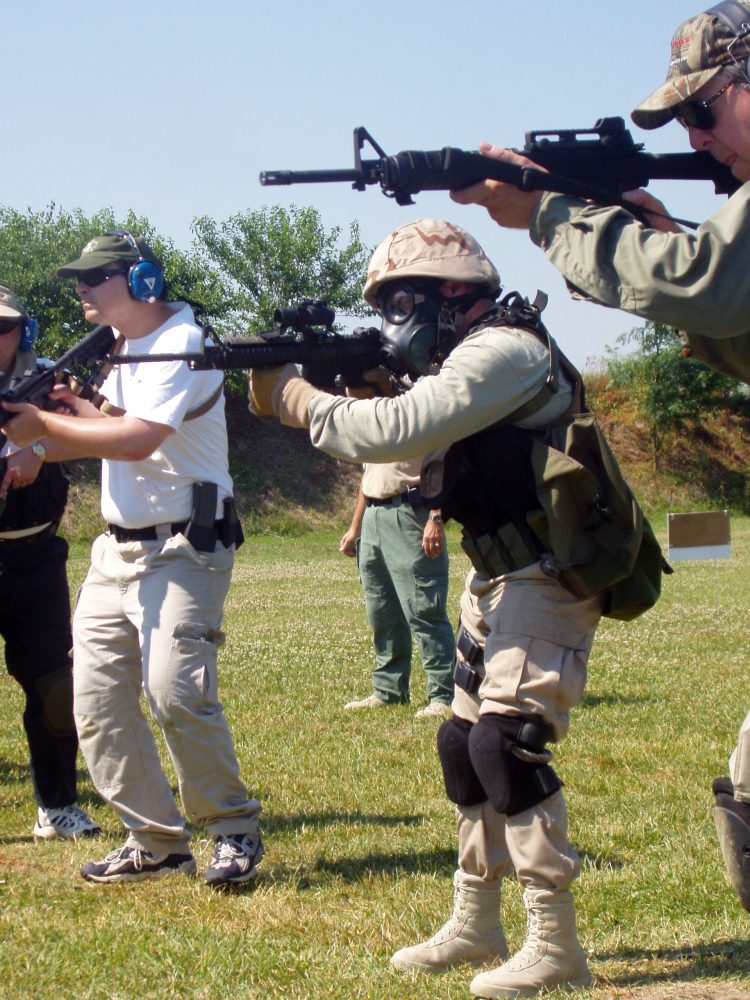
The afternoon of the third day was spent on a 100-round qualification to give students a bearing on their performance and improvement. We also spent some time on one-handed shooting of the carbine for situations were you are injured or the hand is otherwise occupied.
E.A.G.’s tactical carbine course is about gunfighting and, like any fighting training, preparation for the class improves the experience. Coming into the class physically prepared will make the class better for all involved. Also understand that this is not a basic carbine class per se, though it is Pat’s basic carbine class. The pace and skills taught in the course can be overwhelming for some newer shooters.
What could make the class better? Because about every gun in the class was equipped with a white light, a night shoot would be very beneficial to most of the shooters. Because the majority of shootings happen in low light, the ability to fight with the carbine in low light is invaluable. Though it would make one of the days longer, the time spent would be worth it. (Note: Pat does do night shoots in his intermediate and advance class, which are four and six days respectively.)
The E.A.G. course requires 1,500 rounds for the carbine and a few hundred rounds of pistol ammunition, to help students test, develop and educate themselves with their fighting gear. Pat’s ability to teach goes far beyond the printed word; he has a unique ability to convey information in a direct and personal format. Students would be well served to attend an E.A.G. course if they want to become educated gunfighters.
SOURCE:
E.A.G. Tactical
Dept. S.W.A.T.
40 Arcadia Place
Staten Island, NY 10310-2207
(718) 344-4736
www.EAGtactical.com
